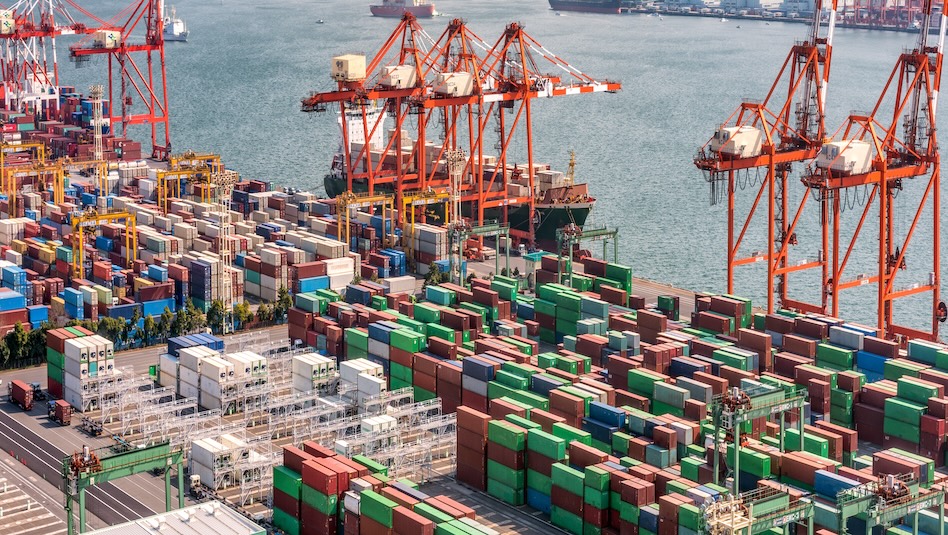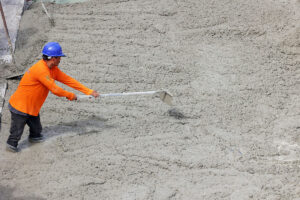




Philippines Trade Update: Exports momentum continues
 DOWNLOAD
DOWNLOAD

Quarterly Economic Growth Release: More BSP cuts to come
 DOWNLOAD
DOWNLOAD

Monthly Economic Update: Fed catches up
 DOWNLOAD
DOWNLOAD


Faster infrastructure development needed to ensure growth — S&P

More investments in infrastructure assets are needed to unlock faster growth rates for emerging Asian economies like the Philippines, S&P Global said.
“A marked improvement in infrastructure and logistics will support the next leg of growth for the emerging markets of Asia,” it said in a report.
“Economies can unlock higher growth rates through accelerated investment in infrastructure assets on top of infrastructure efficiency gains.”
S&P Global said that efficient and improved infrastructure will underpin robust growth in emerging Asia-Pacific, excluding China.
If infrastructure projects are accelerated, it said the Asia-Pacific region can nearly double its economy to $11.4 trillion by 2033 from $6.6 trillion in 2023.
“This translates to an annual real growth rate of about 5.5%. Our baseline forecast incorporates improved infrastructure as a cornerstone supporting these strong growth outcomes,” S&P Global said.
In the region, several governments, such as the Philippines, Indonesia, India, Malaysia, and Vietnam, are prioritizing infrastructure development in their policies and reforms.
“The National Economic and Development Authority (NEDA) coordinates flagship infrastructure projects such as a new airport in Manila, a heavy rail project linking ports in Subic, Manila, and Batangas, and several highway projects,” it said.
Infrastructure is one of the Marcos administration’s priority investment areas. The NEDA Board has so far approved 185 infrastructure flagship projects with a total value of P9.5 trillion.
The flagship projects cover physical and digital connectivity, water resources, agriculture, health, and energy, among others.
The government targets to spend 5-6% of gross domestic product (GDP) on infrastructure annually.
The latest data from the Budget department showed that infrastructure spending jumped by 18.2% to P335.7 billion as of end-April.
Meanwhile, S&P Global said the public sector usually undertakes more infrastructure projects, since the return on investments is spread over two or more decades “meaning duration risk for the private sector is high.”
Infrastructure operators may also find it difficult to turn a profit on these projects, putting more onus on the public sector.
“This does not rule out a role for the private sector. The private sector favors bottom lines and is hence better at innovating and can typically operate faster and more efficiently.”
“Private capital can ease the capital outlay burden on cash-strapped governments already committed to wide-ranging spending priorities. Still, the durations, regulated rates of return, and other project risks mean that the public sector dominates the space.”
S&P Global noted that the region’s public assets relative to economic size “have not been deepening significantly.”
It said that public fixed-investment assets are “relatively low” in the Philippines and Indonesia.
“However, in the Philippines and Indonesia public-private partnership (PPP) capital assets are higher than global averages. In the Philippines they are about 6.7% of GDP; in Indonesia, it is about 4.2% of GDP, which would add to the available total public assets,” it added.
The government has also been pushing for more PPP projects. In December, President Ferdinand R. Marcos, Jr. signed the PPP Code, which seeks to streamline the framework for PPPs.
S&P Global said that the logistics sector has shown improvements in recent years.
“India and the Philippines have seen the largest improvement since 2014 whereas Vietnam, Thailand, and Malaysia saw more modest improvements. In Indonesia, the logistics performance score declined marginally.”
Antonio A. Ligon, a law and business professor at De La Salle University in Manila, noted that the government is “doing its best” to implement the necessary reforms to attract investments in infrastructure.
“However, the implementation of these measures must be strengthened. For example, an efficient implementation of the ease of doing business (and) effective marketing showcasing areas where infrastructure development can be done,” he said in a Viber message.
Nigel Paul C. Villarete, senior adviser on PPP at the technical advisory group Libra Konsult, Inc., said local government units (LGUs) must increase support to fast-track infrastructure projects.
“Oftentimes the National Government (NG) machinery is somewhat cumbersome rolling our projects,” he said in a Viber message. “Many of the upcoming projects may be achieved through PPP with the LGUs. This will also free up the NG to just deal with the major ones.”
Terry L. Ridon, a public investment analyst and convenor of think tank InfraWatch PH, said that infrastructure investments “have always provided a backdrop for economic growth in other areas of the economy.”
“New routes will have faster travel times, and economic efficiencies such as lower fuel costs may translate to lower prices of goods,” he said via e-mail.
“Resolving the traffic gridlock, whether through better and more railways or more efficient transport systems, allows commuters to spend more time doing other productive or economy-impactful activities instead of being stuck in traffic,” he added.
POWER
In a separate report, S&P Global also noted the need to increase investments in the power sector amid expectations of more demand.
“Power demand over 2024-2025 will grow 5-7% in India, Indonesia, and the Philippines, (and) about 3% in Singapore, Malaysia and Thailand.”
S&P Global said that increasing investments for the energy transition will “keep capital expenditures and leverage elevated.”
“Moderating fuel costs provide some relief to lagging generation and distribution firms,” it added.
In his State of the Nation Address on Monday, Mr. Marcos said that he expects the country’s power supply to “increase at a steady pace to meet our growing demand in the next few years.”
“Nonetheless, we are continuously diagnosing and urgently addressing power shortages, as well as the systemic causes of blackouts in unserved and underserved areas,” he added.
The government is aiming to increase the share of renewable energy in the country’s power mix to 35% by 2030 and 50% by 2040. — Luisa Maria Jacinta C. Jocson with input from Beatriz Marie D. Cruz
This article originally appeared on bworldonline.com





 By BusinessWorld
By BusinessWorld